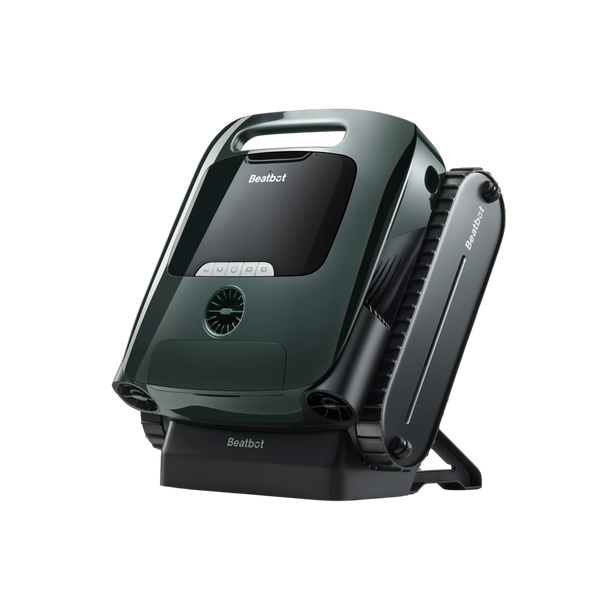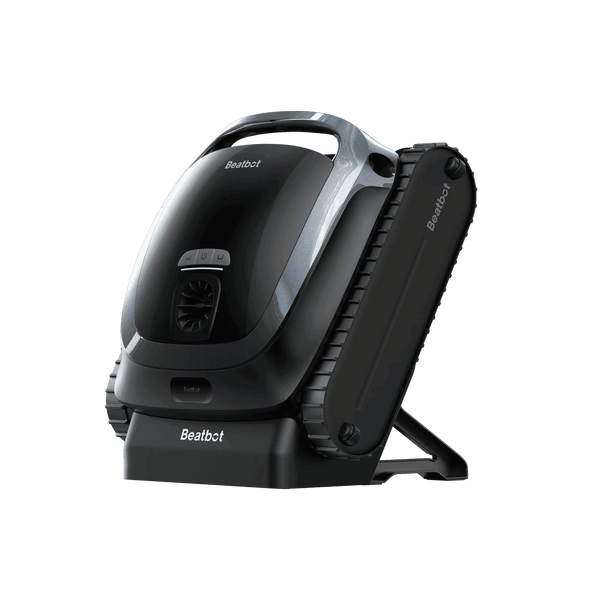Pool Cleaning Service is Important, But How often Does Your Pool Need Cleaning?
A pristine, sparkling private pool can be a world of fascination, but neglecting it can turn it into an unpleasant, smelly green pond. The question arises: How frequently should we maintain our swimming pool to prevent excessive algae growth and decaying leaves, thereby avoiding it from transforming into a ditch that nobody desires? To answer this, let's first understand how this detrimental process occurs.

The color of pool water generally stems from the reflection of light on the tiles at the bottom, giving off a blue hue. If the pool's finish is white, blue, or gray, it will appear blue. Conversely, if the surface is green, brown, tan, or black, the pool will exhibit a greenish tint. Regarding pool water quality, different colors serve as feedback on its health status.
Table of contents
Issues responsible for the color change:
- Algae: Algae is a prevalent culprit behind pool water discoloration. When algae proliferate excessively, they can turn the water green, blue, or even red, detracting from its aesthetic appeal.
- Organics: Trees, leaves, and other environmental factors surrounding the pool can also cause discoloration. These organics may react with chlorine, leading to turbidity or discoloration if not promptly removed.
- Bacteria: Bacteria can cause pool water to become turbid or opaque, compromising its clarity and hygiene.
- Metals: An imbalance in metal content, such as iron, copper, or manganese, can cause pool water discoloration, affecting its overall appearance.

The different colors and their meanings:
- Blue: It indicates that the water quality is basically balanced and healthy, which is the effect the questioner aims to achieve. However, it's worth noting whether the pool water is too blue, which could indicate an excess of copper sulfate (CuSO4).
- Green: It indicates an excessive amount of algae. Algae can also cause many problems, even making the pool water turbid. It may also indicate the presence of copper in the water, which, when oxidized in chlorinated pool water, can turn the water a light bright green.
- Brown: This color indicates a high iron content, mixing with pool water to produce an orange-brown hue.
- Purple: It indicates the presence of manganese, which can stain the pool lining and turbid the pool water. When pool water contains magnesium or manganese, adding chlorine will cause the water to turn purple.
- White: It indicates the presence of aluminum or a lack of chlorine in the pool, meaning the oxidation-reduction potential drops rapidly below 600mV, causing organics in the pool water to emulsify and turn the water cloudy.
The Importance of Water Chemistry in Pool Care
Maintaining the water chemistry in your pool is a crucial aspect of pool care, serving multiple essential functions. At its core, balancing water chemistry ensures a safe and healthy swimming environment.
Prevents Bacteria and Algae Growth : Proper chemical balance, especially the right levels of chlorine, helps prevent the growth of harmful bacteria and unsightly algae. This not only keeps the water clear but also minimizes health risks for swimmers.
Protects Pool Equipment : The right pH levels prevent corrosion and scale build-up on pool equipment and surfaces. This can extend the life of your pool pump, filters, and liners, saving you money on repairs and replacements.
Enhances Swimmer Comfort : Balanced water chemistry prevents common annoyances such as eye irritation, skin rashes, and unpleasant odors. When pH and chlorine levels are within their ideal ranges, swimmers enjoy a better overall pool experience.
Maintains Water Clarity : Regular testing and adjustments keep the water looking clear and inviting. When water chemistry is off, the result can be cloudy water or deposits on the pool floor, detracting from the pool’s aesthetic appeal.
Regularly test your pool's pH and chlorine levels—ideally weekly—to ensure they stay within recommended ranges. By doing so, you not only protect your investment but also ensure a safe and enjoyable swimming experience.
So, how often should we maintain the pool?
Generally speaking, the regular maintenance schedule for a swimming pool can vary depending on its usage frequency, type (such as public or private), and maintenance level.
- Daily Cleaning: The pool surface and bottom should be cleaned daily, including removing floating debris (like leaves, hair, etc.) and bottom sediments. Additionally, check and replenish the water quality and necessary chemicals, such as disinfectants, to ensure the water is clear and meets hygiene standards.
- Weekly Maintenance:
- Cleaning and Inspection:
Clean the pool edges, water surface, and ground weekly, as well as the filtration equipment (such as pre-filter baskets, filter membranes, etc.). Simultaneously, check and adjust the operating status of the pool system, including filtration and disinfection systems, to ensure they are running normally.
- Water Replenishment:
Depending on water evaporation, splashing, and leakage, weekly water replenishment may be necessary, with corresponding adjustments to chemical additions.
- Monthly Maintenance:
- Systematic Inspection:
Monthly, conduct a comprehensive inspection of the pool's drainage system, lighting system, and equipment (such as pumps, filters, etc.) to ensure their safety and effectiveness.
- Equipment Maintenance:
Perform necessary maintenance and repairs on pool equipment, such as cleaning filters and checking electrical connections.
-
Quarterly Maintenance: Carry out large-scale repairs and maintenance quarterly, including checking the structural stability of the pool, repairing or replacing damaged equipment and facilities. Additionally, conduct deep pool cleaning and disinfection.
- Annual Maintenance: Perform thorough inspections and maintenance annually, including a comprehensive check of the pool structure, repairing or replacing aged and damaged parts. Depending on the pool's usage and maintenance level, it may be necessary to consider a full water replacement or large-scale water treatment.
How Often Should You Vacuum Your Pool?
To maintain a clean and inviting pool, regular vacuuming is essential. Ideally, you should aim to vacuum your pool at least once a week. This routine helps eliminate dirt and debris that tend to accumulate at the bottom.
By consistently vacuuming, you not only enhance the overall appearance of your pool but also ensure that it remains hygienic and safe for swimming. During certain seasons, such as when leaves fall more rapidly, you might find it necessary to increase the frequency to twice weekly.
In addition to routine cleaning, keep an eye on the pool's condition. If you notice a sudden increase in debris, it may be wise to vacuum more frequently to address the issue promptly. Consistent care will help you enjoy a sparkling, pristine pool all season long.
Why is Brushing the Pool Walls and Tiles Important?
Maintaining a clean and inviting pool goes beyond just keeping the water clear. Regularly brushing the pool walls and tiles plays a crucial role in pool upkeep that many might overlook.
Prevent Algae Formation
One of the main reasons for brushing your pool is to prevent algae growth. Algae spores can quickly latch onto pool surfaces, making them harder to eliminate once they take hold. By brushing the walls and tiles, you disrupt this process, making it difficult for algae to establish and spread.
Reduce Build-Up of Grime
Over time, calcium deposits, dirt, and other debris can accumulate on the surfaces of your pool. These buildups not only make your pool look less appealing but can also lead to rough surfaces that are uncomfortable to touch. Regular brushing helps eliminate these deposits before they become problematic.
Extend the Life of Your Pool
Consistent maintenance, including brushing, can significantly extend the lifespan of your pool’s surfaces. By removing harmful residues and preventing build-up, you reduce wear and tear, helping to preserve the integrity of the materials.
Improve Water Quality
Brushing aids in maintaining balanced water chemistry. By keeping surfaces clean, you ensure that pool chemicals work effectively, promoting overall water quality and a healthier swimming environment.
Incorporate brushing into your weekly pool maintenance routine, and you’ll enjoy a cleaner, safer, and more attractive pool season after season.
Special Circumstances Maintenance:
- Water Pollution: In case of severe water pollution or accumulation of large amounts of organics, immediate measures should be taken for water treatment, including increasing disinfectant dosages, replacing part or all of the pool water, etc.
- Weather Changes: During heavy rain, rainy, or sunny weather conditions, increase the frequency of water quality testing and cleaning to ensure water stability. Prepare the pool for potential damage during extreme weather events, such as hurricanes or floods, by securing equipment and removing debris.
Recommendation for a more convenient maintenance: Beatbot AquaSense Pro
We all know that the efforts to keep the lovely pool in a nice condition is a toil, but Beatbot AquaSense Pro can do you a favor.

- Efficient Five-in-One Pool Cleaner:
The Beatbot AquaSense Pro offers comprehensive cleaning, addressing clarification, debris floating on the water surface, waterline residue, wall grime, and floor dirt.
- Optimized Cleaning Path:
Equipped with ultrasonic sensors, the AquaSense Pro scans your pool and uses CleverNav™ for precise, non-overlapping routes, ensuring thorough cleaning.
- Dual Brush System:
The DuoSpeedFlex™ dual-roller brush system doubles cleaning efficiency with front and rear brushes operating independently at variable speeds.
- Effortless Automation:
With effortless automation via the Beatbot APP, you can control pool maintenance with ease, select and customise your cleaning modes, perform OTA updates for performance optimizations, and ensure your pool stays clean as well as healthy.
By incorporating these tips and utilizing innovative technology like the Beatbot AquaSense Pro, you can ensure your pool stays a source of relaxation and enjoyment for years to come.
Conclusion: The Key to Pool Paradise
So, there you have it—pool maintenance isn't just about keeping the water clean; it's about preserving a slice of paradise in your own backyard. By staying vigilant with regular cleaning and embracing the efficiency of the Beatbot AquaSense Pro, you'll ensure that your pool remains a sparkling escape for years to come.
In fact, for some pool owners, the convenience of pool cleaning services can be a game-changer. These services can provide professional assistance in maintaining the cleanliness and health of your pool. Whether you opt for a full-service approach or prefer to handle the cleaning yourself with the help of advanced tools like the Beatbot AquaSense Pro, the key is to keep your pool in pristine condition.
Relative Blogs
About the author





















